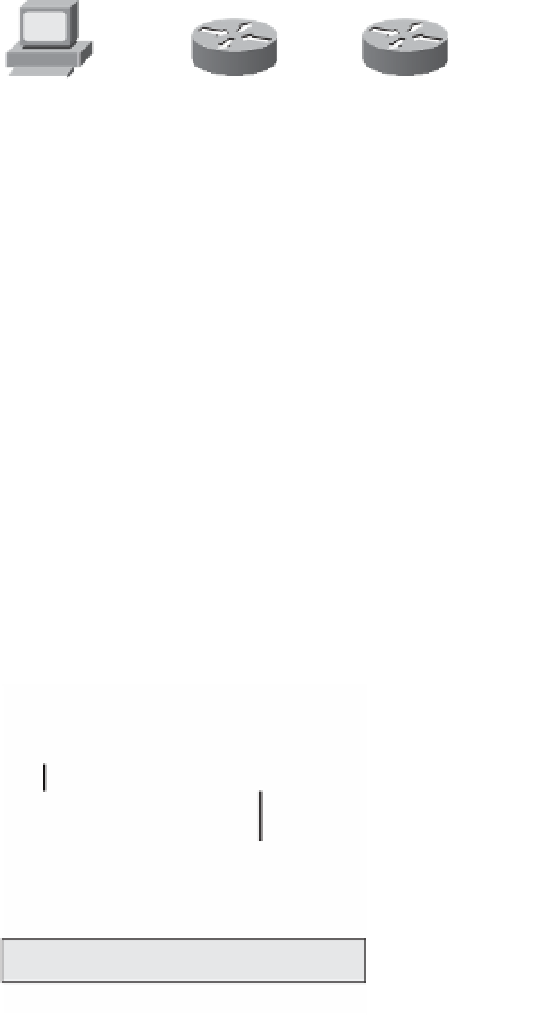Information Technology Reference
In-Depth Information
interface is initialized. First, the host performs a duplicate address-detection process. The
host joins the all-nodes multicast group to receive neighbor advertisements from other
nodes. The neighbor advertisements include the subnet or prefix associated with the link.
The host then sends a neighbor-solicitation message with the tentative IP address (interface
identifier) as the target. If a host is already using the tentative IP address, that host replies
with a neighbor advertisement. If the host receives no neighbor advertisement, the target
IP address becomes the link-local address of the originating host. It uses the link-local
prefix FE80::. An alternate is to manually configure the link-local address.
Router A
Router B
mtu 2000
mtu 1300
Host A
mtu 1500
2000 Bytes
ICMPv6 Packet to Big, MTU = 1500
1500 Bytes
ICMPv6 Packet to Big, MTU = 1300
1300 Bytes
Figure 9-8
ICMPv6 Packet-Too-Big Message
Autoconfiguration of Globally Unique IP address
RFC 2462 describes stateless autoconfiguration. With autoconfiguration of globally
unique IP addresses, IPv6 hosts can use a stateless autoconfiguration method, without
DHCP, to acquire their own IP address information. It is done on a per-interface basis. As
shown in Figure 9-9, after a host has autoconfigured a link-local address it listens for
router advertisement messages. These router messages contain the prefix address to be
used for the network. The IPv6 address is then formed from the prefix plus the interface
ID (derives from the MAC address).
Router
Prefix
MAC Address
Prefix
Interface ID
Autoconfigured IPv6 Address
Figure 9-9
Stateless Autoconfiguration






















